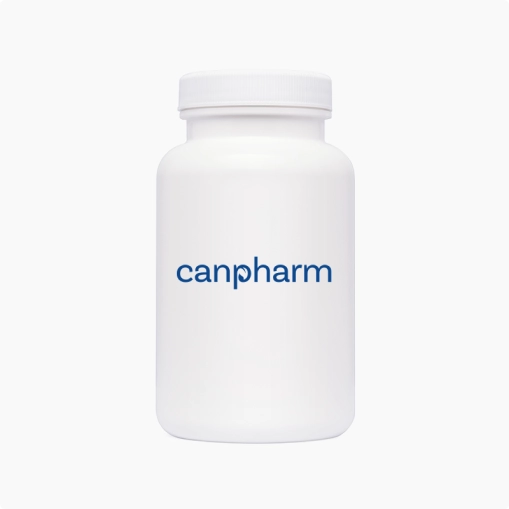
Lantus (Insulin Glargine)
Out of stock
We will notify you as soon as it becomes available.
-
Description
-
Related Products
-
Related Conditions
Fact Table
| Fact Table | |
|---|---|
| Formula | C267H404N72O78S6 |
| License | FDA approved |
| Bioavailability | ~60% (subcutaneous injection) |
| Legal status | Prescription only |
| Chemical Name | Insulin, human recombinant analog |
| Elimination half-life | ~12 hours (extended effect up to 24 hours) |
| Dosage (Strength) | 100 units/mL (U-100) |
| Pregnancy | Category C – Consult Doctor |
| Brands | Lantus, Basaglar, Semglee |
| Protein binding | Negligible |
| PubChem CID | 16132438 |
| MedlinePlus | a601116 |
| ChEBI | 70713 |
| ATC code | A10AE04 |
| DrugBank | DB00047 |
| KEGG | D04572 |
| Routes of administration | Subcutaneous injection |
Lantus (Insulin Glargine) is a long-acting basal insulin analog used to control high blood sugar in individuals with diabetes mellitus. It is specifically indicated for both type 1 diabetes in adults and children aged six years and older, and type 2 diabetes in adults. Lantus provides a steady release of insulin over 24 hours with no pronounced peak, thereby mimicking the body’s natural basal insulin production. Its formulation helps reduce the risk of blood sugar fluctuations between meals and during sleep, promoting better glycemic control and helping to prevent complications associated with poorly managed diabetes.
Directions
Lantus should be administered once daily at the same time each day, by subcutaneous injection in the abdominal area, thigh, or upper arm. The dosage and timing should be individualized based on the patient’s metabolic needs, blood glucose monitoring results, and glycemic goals. It must not be mixed with other insulins or diluted, as doing so may alter its prolonged action and increase the risk of hypoglycemia. Patients should rotate injection sites within the same region to reduce the risk of lipodystrophy.
Ingredients
Each mL of Lantus contains 100 units of insulin glargine. Inactive ingredients include glycerol 85%, m-cresol, zinc, polysorbate 20, sodium hydroxide (to adjust pH), and water for injection. The solution is clear and colorless with a pH of approximately 4.
Contraindications
Lantus is contraindicated in patients with hypersensitivity to insulin glargine or any of the excipients in the formulation. It should not be used during episodes of hypoglycemia. Intravenous administration or use in insulin pumps is not recommended due to the risk of severe hypoglycemia.
Cautions
Careful monitoring of blood glucose levels is essential when initiating or adjusting insulin therapy. Caution should be exercised in patients with renal or hepatic impairment, as insulin requirements may be reduced. Concurrent use of medications that affect glucose metabolism—such as corticosteroids, beta-blockers, or oral antidiabetic agents—should be closely monitored. Alcohol consumption can also alter insulin requirements and increase the risk of hypoglycemia. Switching from another type of insulin should be done under medical supervision, with dose adjustments as needed.
Side Effects
Common and serious side effects associated with Lantus may include:
- Hypoglycemia (low blood sugar)
- Injection site reactions (e.g., redness, swelling, itching)
- Lipodystrophy (thickening or thinning of fatty tissue at injection sites)
- Allergic reactions (rash, pruritus)
- Edema (fluid retention)
- Weight gain
Frequently Asked Questions about Lantus (Insulin Glargine)
Is Lantus a fast-acting or long-acting insulin?
Lantus is a long-acting insulin. It provides a steady release of insulin over approximately 24 hours and is designed to mimic the body’s basal insulin needs.
What should I do if my blood sugar is low while on Lantus?
Treat low blood sugar with fast-acting carbohydrates (e.g., juice, glucose tablets). Recheck your levels after 15 minutes. If symptoms persist or worsen, seek medical attention. Always carry emergency glucose if you're on insulin.
Can Lantus be taken in the morning instead of at night?
Yes. Lantus can be taken either in the morning or evening, but it should be taken at the same time every day. Your healthcare provider will help determine the best time for your schedule and blood sugar control.
Does Lantus require a prescription?
Yes. In the U.S. and most countries, Lantus is a prescription-only medication and must be prescribed by a healthcare provider.
What do I do if Lantus looks cloudy or has particles?
Lantus should be clear and colorless. If it appears cloudy, thickened, or contains particles, do not use it. Dispose of it and use a new pen or vial.
Can I fly with Lantus?
Yes. When flying:
Keep Lantus in your carry-on bag (not checked luggage)
Carry a doctor’s note or prescription
Keep it cool but not frozen
Airport security generally allows medical supplies with proper labeling.
How do I know if Lantus is working for me?
Your doctor will monitor:
Fasting blood glucose levels
HbA1c (average blood sugar over 3 months)
If levels stay in your target range and you have fewer highs and lows, Lantus is likely working as intended.
Does Lantus interact with other medications?
Yes. Some drugs can affect blood sugar levels or insulin sensitivity, including:
Steroids
Beta-blockers
Diuretics
Oral diabetes medications
Always inform your doctor of all medicines and supplements you're taking.
How do I dispose of Lantus pens or needles safely?
Used needles and pens should go into an FDA-cleared sharps disposal container. If unavailable, use a sturdy, puncture-resistant household container (like a laundry detergent bottle). Never throw needles loosely into the trash.
Is there a risk of hypoglycemia with Lantus?
Yes. Though Lantus has a steady action and low peak, hypoglycemia is still possible, especially if you:
Skip meals
Over-exercise
Take too much insulin
Always monitor your blood sugar and know how to treat lows quickly.
